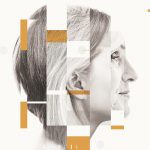Salk researchers have resolved a long-standing scientific debate about how behavior is organized in the brain. Associate Professor Xin Jin and first author Claire Geddes, a UC San Diego graduate student, discovered that learned behavior is organized in a hierarchy with multiple levels of control, offering possible new therapeutic targets for disorders that involve an inability to control one’s actions. The study used mice trained to carry out a series of lever presses in a specific order, left-left-right-right, to make the discovery.
Neuroscience
Brain cells called astrocytes have unexpected role in brain “plasticity”
A Salk team led by Associate Professor Nicola Allen and first author Elena Blanco-Suarez showed that astrocytes—long-overlooked supportive cells in the brain—enable the brain’s plasticity, a previously unknown role for these cells. The team found that a protein secreted by astrocytes called Chrdl1 increases the number and maturity of connections between nerve cells, enabling the stabilization of neural connections and circuits once the connections finish developing. The findings could point to ways to restore connections lost due to aging or trauma.
Read News ReleaseWhy screen time can disrupt sleep
Professor Satchin Panda, first author Ludovic Mure and colleagues pinpointed how certain cells in our eyes process ambient light and reset our internal clocks, or circadian rhythms—the daily cycles of physiological processes. When these cells are exposed to artificial light late into the night, our internal clocks can become disoriented, resulting in a host of health issues. By detailing the interactions of the light-sensitive protein melanopsin and how the eyes react to light, the research may lead to new treatments for migraines, insomnia, jet lag and circadian-rhythm disorders.
Read News ReleaseThriving on teamwork: new research shows how brain cells filter information in groups
For decades, scientists studying the visual system thought that neurons operated as filters. Some neurons preferred coarse details of the visual scene and ignored fine details, while other neurons did the opposite. Professor Thomas Albright, first author Ambarish Pawar and coauthors found that the same neurons that preferred coarse details were able to change to prefer finer details under different conditions. The work could help to better understand neural mechanisms that shape our perceptions of the world.
Read News ReleaseScientists reveal clues into early development of autism spectrum disorder
Autism spectrum disorder (ASD) affects roughly 1 in 59 children in the United States. Salk President and Professor Rusty Gage, first author Simon Schafer, and colleagues compared stem cells created from the skin cells of individuals with ASD against stem cells created from individuals without ASD to uncover, for the first time, measurable differences in the patterns and speed of development in the ASD-derived cells. The findings could lead to diagnostic methods to detect the disorder at an early stage.
Read News ReleaseFeatured Stories
 Gerald Shadel explores stressed-out mitochondriaInside Salk sat down with Shadel to find out how he became interested in mitochondria, what he is driven by scientifically and what he has learned about aging along the way.
Gerald Shadel explores stressed-out mitochondriaInside Salk sat down with Shadel to find out how he became interested in mitochondria, what he is driven by scientifically and what he has learned about aging along the way. The science of agingWhat we know about longevity so far: Minimizing smoking, obesity and overeating while maximizing exercise and social interactions seem to correspond to longer and healthier lives, but not always. While many factors have been touted as panaceas for extending life–everything from adhering to a Mediterranean diet to regularly imbibing red wine–a “fountain of youth” has remained stubbornly elusive.
The science of agingWhat we know about longevity so far: Minimizing smoking, obesity and overeating while maximizing exercise and social interactions seem to correspond to longer and healthier lives, but not always. While many factors have been touted as panaceas for extending life–everything from adhering to a Mediterranean diet to regularly imbibing red wine–a “fountain of youth” has remained stubbornly elusive. Lillian Eichner: Reading the clues to fight cancerEichner began studying cancer while pursuing her PhD at McGill University in Montreal. She was drawn to the Salk Institute for her postdoctoral studies because Reuben Shaw, director of the Salk Cancer Center and a professor in Salk’s Molecular and Cell Biology Laboratory, has taken a new approach to cancer by studying the metabolic pathways of deadly tumors.
Lillian Eichner: Reading the clues to fight cancerEichner began studying cancer while pursuing her PhD at McGill University in Montreal. She was drawn to the Salk Institute for her postdoctoral studies because Reuben Shaw, director of the Salk Cancer Center and a professor in Salk’s Molecular and Cell Biology Laboratory, has taken a new approach to cancer by studying the metabolic pathways of deadly tumors.
















































